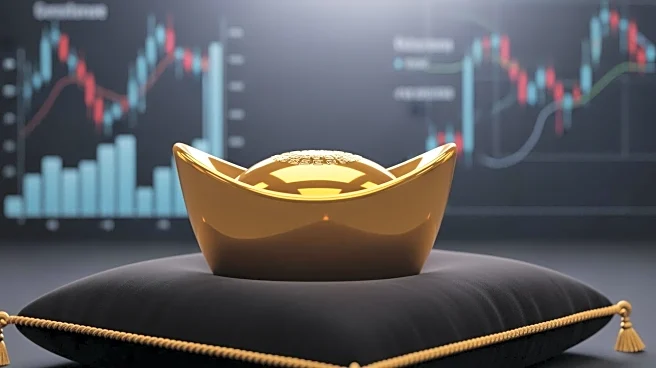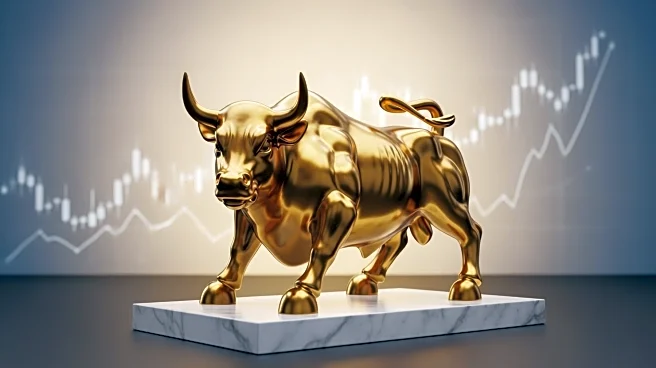What's Happening?
Gold prices hit a record high of $4,381 per ounce on Monday, driven by political tensions, economic uncertainty, and a wave of fear-of-missing-out (FOMO) buying. This surge marks a significant milestone,
as gold has increased by 54% year-to-date, surpassing key psychological resistance levels. The rally has been fueled by U.S. tariff uncertainty and recent rate cuts by the Federal Reserve, which have contributed to gold's performance outpacing previous easing cycles. However, the price experienced a sharp decline on Tuesday, falling by 5.3% to $4,054.69 per ounce, highlighting the volatile nature of gold prices.
Why It's Important?
The record high in gold prices reflects broader economic and geopolitical uncertainties, impacting investors' strategies and market dynamics. The surge in gold prices indicates a shift in investor sentiment, with Western investors driving the rally rather than emerging market buyers. This change suggests increased volatility and uncertainty in the market. The rise in gold prices also underscores the impact of U.S. monetary policy, as rate cuts have historically influenced gold's performance. The fluctuations in gold prices could affect various stakeholders, including central banks and institutional investors, who may need to adjust their holdings and strategies.
What's Next?
The future of gold prices remains uncertain, with potential consolidation expected after the recent rally. Analysts suggest that a correction could be healthy for the market, allowing it to stabilize. The upcoming London Bullion Market Association conference may provide insights into future price forecasts and market trends. Additionally, the Federal Reserve's monetary policy decisions and geopolitical developments will continue to influence gold prices. Investors and market participants will closely monitor these factors to assess the potential for further price increases or corrections.
Beyond the Headlines
The recent surge in gold prices highlights the broader implications of economic and geopolitical uncertainties. As investors seek safe-haven assets, gold's appeal as a store of value and hedge against inflation becomes more pronounced. The shift in investor demographics, with increased Western participation, may lead to changes in market dynamics and volatility. Furthermore, the impact of U.S. monetary policy and geopolitical tensions on gold prices underscores the interconnectedness of global markets and the importance of strategic asset allocation.











